
Tips for Raising Eco Friendly Kids
by HealthfulMD
Raising environmentally conscious children can be done by teaching them how to recycle, reduce and reuse. Eco friendly kids are more aware and good for the health of the planet.
How to Raise Eco Friendly Children
One of my goals for raising my two daughters is that they become more 'eco friendly' and 'environmentally conscious.'
To me being 'eco friendly' or 'environmentally friendly' as being concerned about the health of the planet and doing what one can to reduce, reuse and recycle. Being 'environmentally conscious' means being aware of one's impact on our planet.
There are many different ways of getting kids involved with helping the earth from putting them in charge of the recycling at home to getting them to pack no trash lunches and bring their own water bottles.
Define Eco Friendly or Environmentally Friendly
Tips to Raise Eco Friendly Kids
Raising eco friendly children involved being an eco friendly and environmentally conscious parent.
Some of the ways to get kids to become more environmentally conscious about the impact their actions have on the planet is to incorporate eco friendly habits into daily living.
- Teach children about recycling and make sure they recycle.
- Show them about ways to save energy.
- Make sure they learn how to reduce and reuse water by turning off water when it is not in use and save running water.
- Teach them to turn out lights. Have them remind you to turn out the lights.
- Get them to be more eco friendly at school.
- Have them learn how to pack a no trash lunch and bring reusable utensils
- Learn to say "No" to buying water bottles. Use reusable bottles.
- Get them involved with a school recycling program.
- Make sure the family brings reusable shopping bags when shopping. Buy products in containers that can be recycled.
- Have them help grow a family garden
- Hold recycling or swapping parties to recycle toys, books, clothes and costumes.
- Get them reading about being more eco friendly.
Even young children can learn how to recycle, turn off lights and water to save energy.
Children's Books to Help the Environment
Get them Reading about Ways to Help the Environment
 |  |  |
| Last Child in the Woods: Saving Our C... Algonquin Books | Last Child in the Woods: Saving Our C... Algonquin Books | Last Child in the Woods Publisher: Al... Algonquin s, Paperback(2008) Only $23.69 |
Tips to Teach Kids about Recycling
Learning How to Recycle
Start teaching children about recycling when they are little. Teach them which types of trash can be recycled. Read books about recycling.
We keep separate containers for trash and recycling readily available in the kitchen, so recycling can go straight into recycling.
When they get older, put them in charge of the family recycling. They've learned what types of trash can be recycled, so they can put all of the recyling into recycling containers.
If there is money involved with the family recycling, it could be given to the kids in charge of the recycling.
Teaching Kids What to Recycle at Home
Disney's Friends for Change
Project Green
Disney's Friends for Change Project Green
Disney's Friends for Change Project Green is about taking steps together with your friends to help the planet. Friends for Change helps kids help the planet by inspiring kids to work together to make small daily changes that add up to a big difference.
Disney Friends for Change ToolKits
Download different Friends for Change ToolKits to Green Your Scene, Be more Book Smart, Learn what you can do about the Oceans, Discover ways to Make Yourself Heard and more.
Tips to Power Down to Save Energy
Children can become more eco friendly by learning how to save energy by powering down appliances, using power strips and reusable batteries.
Teach children to
- Power down appliances like computers when not in use.
- Plug cell phones and electronic game chargers into a power strip. Then power down the power strip whenever the electronics are not in use.
- Adjust the thermostat. Turn heaters down at least two degrees in the winter and turn air conditioners up at least two degrees in the summer.
- Wash laundry in cold water.
Unplugging devices, washing in cold water and lowering and raising the thermostat can help save a lot of energy. These simple action can make a big difference by saving energy, saving money and reducing the impact on the planet.
Vote - Do you try to save energy?
Tips to Use Water Wisely
One key way to raise more eco friendly children is to teach them to use water wisely by watching the amount of water used. Fixing leaks, turning it off when it is not needed and limiting the amount of water used for showering or washing a car can make a big difference.
- Turn off the water in between when washing your hands.
- Turn off the water when brushing your teeth.
- Save water in a container while waiting for the water to heat up in the sink or the shower. Use the saved water to water plants or for cleaning dishes.
- Rinse dishes off while the food is still fresh. It will take more water if the food dries out.
- Run only wash full loads of laundry or dishes.
- Decrease the amount of time in the shower, so everyone takes a shorter shower.
- Don't use the toilet as a wastebasket. Flush only after using the toilet.
- Fix faucet leaks.
- Water plants during the morning or evening, when it is cooler. Avoid watering during the hottest part of the day. It will be lost to evaporation.
Tips for Saving Energy with Lights
There are many ways that energy can be saved with lights and appliances.
- Turn out the lights when they are not in use, whenever you leave a room.
- Post signs near light switches to remind people to turn off the lights.
- Replace standard light bulbs with compact fluorescent light bulbs (CFL).
- Buy energy-saving lights.
- Power off electrical appliances when not in use.
Even young children can help by reminding older siblings and parents to turn out the lights.
Tips to Be Eco Friendly at School
There are many ways for kids to be more eco friendly at school, from the school and lunch supplies that they buy to recycling school materials.
- Ride the bus to school.
- Cover books with recycled materials like brown bags, tin-foil or even tyvek envelopes.
- Use recycled paper and recycled notebooks.
- Use recycled or refillable pencils.
- Recycle school papers at school and at home.
- Participate in school-wide recycling activities.
- Pack lunch in a reusable lunch box or lunch bag.
- Take a reusable water bottle
- Pack no waste lunches
- Encourage teachers to turn off lights.
Another fun way to get kids to be more eco friendly it to organize a book, toys. clothes or costume swapping event. This encourages children to reuse their books, toys and clothes. It is particularly popular with parents around Halloween to be able to get new Halloween costumes.
Use Recycled Paper and Notebooks
Using Recycled Products Helps Reduce Water Waste
 |  |  |
| New Leaf Fashion 100% Recycled Paper ... Top Flight Inc. | New Leaf Basic 100% Recycled Filler P... Top Flight Inc. | iScholar ecoScholar Recycled Composit... iScholar |
Use Recycled or Refillable Pencils
Recycled Pencils Reduce Wood and Water Waste
 |  |  |
| Ticonderoga EnviroStik, No. 2 Soft, S... Dixon Ticonderoga | Zebra Pen Cadoozles Mechanical Pencil... Zebra Pen Only $13.5 | Dr Seuss, The Lorax Project Pencils, ... 0 |
More on Being Eco Friendly at School
Getting Environmentally Friendly at School
These days, school is about more than learning how to read, write, and do arithmetic. Waste management and conservation are important, too.
10 Ways to Live Green This School Year
Keep the environment in mind when you kick off this school year from Good Housekeeping.
Top 10 Eco Friendly Back to School Tips
Back to school is the perfect time to start adopting some greener habits you & your whole family can practice all year long. Below are the top ten tips to going back to school the green way.
Eco-friendly schools offer students fresh lessons
Great Seneca Creek Elementary School was the first public school in Maryland to receive certification as "eco-friendly" — a concept catching on in schools around the nation. Eco-friendly schools offer ways to save energy, improve air quality and educate students about the environment.
BACK TO SCHOOL: Eco-friendly school supplies
Going back to school not only means class registration and mentally gearing up for another year of concentrated learning- it usually involves a good deal of shopping. Texbooks are just the beginning- the little things like pencils, pens, paper, and notebooks, can really add up- for your wallet and for the environment. So make greener choices this year and go back to school in sustainable academic style.
Tips to Pack a No Trash Lunch
According to Nubius Organics the average "brown bag" lunch can create between 4–8 ounces of garbage everyday. Over a school year's time, this can add up to 100 pounds of trash.
Preparing a No Trash Lunch or a No Waste Lunch involves eliminating disposable paper and plastic packaging, utensils and wrappings.
- Start with a reusable lunch bag, not a brown paper throw-away.
- Pack food in reusable containers - sandwich containers, sandwich wraps, fruit containers, snack containers.
- Make your own applesauce, yogurt and fruit containers. Buy the largest containers available and package them into reusable single sized containers.
- Use cloth napkins in place of paper.
- Pack reusable utensils.
- Bring drinks in reusable water bottles.
Reusable Water Bottles for Kids
Ditch Plastic Water Bottles with these Reusable Beverage Containers
 |  |  |
| Thermos Intak Kids Color Change Hydra... Thermos | Kids Konserve Stainless Steel 20-Ounc... Kids Konserve | Contigo Autoseal Stainless Steel Kids... Contigo |
More on Packing a No Waste Lunch
Tips for a No Waste Lunch at Home and at School
Did you know that if you use a disposable lunch, you create between 4–8 ounces of garbage everyday? That can add up to as much as 100 pounds per year!
Pack a No Waste Lunch for a Cleaner Planet, Healthier You
Packing a No Waste Lunch is healthy, eco-friendly, and more economical than buying prepared, to-go food. The average disposable “brown bag” lunch creates between 4–8 ounces of garbage everyday. That can add up to as much as 100 pounds per year! Not only do prepared and processed foods contain excess packaging, they are also up to 25% more expensive.
Can You Pack a No-Waste Lunch?
Billions of plastic baggies, over a billion pounds of trash, and countless fields of food are tossed into elementary and high school wastebaskets in America each year. Americans pitch 2.5 million plastic bottles every hour. Clearly no one is going to suggest that we’re a very “green” nation with such practices. But we’re getting better at it. Low-waste and waste-free lunch packing is thankfully becoming more mainstream in America.
How to Pack a Waste Free Lunch
This is a very easy change you can make for the environment. By carrying your lunch this way, you also avoid trips to restaurants or the cafeteria and you can eat better. Try packing a lunch without any trash left.
More Tips on Packing a Waste Free Lunch
Tips to Start a School Recycling Program
Getting children involved in starting or participating in their school's recycling program is a great way to help them learn about volunteering and helping out in the community.
If their school doesn't have a recycling program, getting started can be pretty simple.
- Find out who else is interested in doing recycling (teachers, parents, custodians, administrators and other children).
- Organize a team, establish a club and/or get student government involved that includes students, teachers, parents and administrators.
- Decide what can be recycled, where it can be recycled and where recyclables can be stored on campus.
- Get recycling containers. You may need a container for every classroom.
- Make sure kids and teachers know about using the recycling containers.
- Figure out how the recyclables will be picked up. This will likely involve the custodial staff, students and possibly some parents.
- Once a critical amount is reached, take the recyclables into the recycling center.
- If the club gets money back for recycling, they need to decide what to do with the money. Perhaps finding a local cause that could use extra funds.
- Recruit new students for the following year.
By recycling at school there is likely to be a lot less garbage going into the dumpsters which will made the adminstration and the school board happy.
More on Starting a School Recycling Program
Top 10 Tips for Starting a School Recycling Program
Ever thought of starting a recycling program in your school? Well, here are some great tips to make it happen.
Action Tips: Start a School Recycling Program
Start a recycling program at your school. It might take some work, but its well worth it.
Paper Recycling at School
Paper recycling provides great educational value for students and their families. By using the links below, educators and students can find a variety of standards-based activities that highlight the opportunities for increased paper recovery in their own schools and homes.
Setting Up a School Recycling and Waste Reduction Program
Tips from the San Mateo County RecycleWorks to set up a school recycling program.
Start a School Recycling Program
Tips from the St. Charles County Office of Environmental Health and Protection in Missouri.
Tips to Be Eco Friendly at the Store
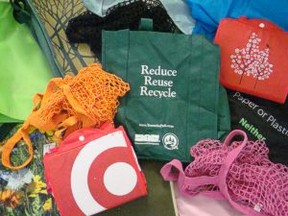
One of the easiest ways to get kids involved in being more eco friendly is getting them to bring along the reusable shopping bags every time the family goes shopping.
The family can also bring reusable produce bags to cut down on plastic.
When shopping look for containers and packaging that can be recycled or reused.
Image © Kirsti A. Dyer
Dr. Seuss Reusable and Recycled Shopping Bags
Let Kids bring their own Bags to the Store or Farmer's Market
 |  |  |
| Dr. Seuss CAT the Hat Kids Recycled S... Vandor | Dr. Seuss Green Eggs & Ham Recycled T... Dr. Seuss | Dr. Seuss the Lorax Kids ECO Recycled... DR. Seuss |
Remembering and Using the Reusables
Remember - Bring the Reusable Bags
Every day, people forget their reusable bags and end up taking items home in more plastic or paper bags; this completely defeats the purpose of buying reusable bags in the first place. One of my summer projects is to make bringing the reusable bags another habit.
Reusable Snack Bags - Reusable Sandwich Bags
I realized when figuring out 15 Ways to Minimize Your Impact on the Garbage Island that I needed to find a way to minimized the number of plastic bags we use weekly in making the girls lunches for school.
Reusable Halloween Bags - Shopping Bags and Designer Totes
The idea for this lens came out of what we did last year for Halloween. We decided to take the girls to a downtown trick or treating and costume parade at the last minute.
Reusable Gift Wrap Ideas for Eco Friendly Christmas Presents
One way of going greener this year for Christmas is to wrap presents and gifts with bags, towels, scarves and other items can be used long after the gift has been opened. Using resuable items for gift wrap is good for the environment and is another way to give a second gift with your holiday present.
Tips to Start a Family Garden
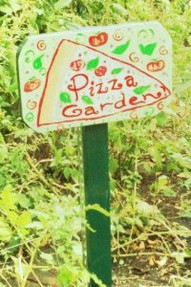 A fun way to get kids more aware of the planet and where food comes from is to get them involved in planting their own garden.
A fun way to get kids more aware of the planet and where food comes from is to get them involved in planting their own garden.
Since most children and teens like eating pizza, plant a garden that grows pizza ingredients.
By planting fresh tomatoes, peppers, squash and herbs like oregano, basil and parsley you will be able to harvest and cook up a garden fresh pizza.
A Three Sisters Garden is another children-friendly gardenwhere kids can learn about how the Native Americans used companion gardening to grow crops.
They may also find growning a wildlife garden to attract different forms of wildlife a fun nature experience.
Image by barry.pousman
Fun Ideas for Planting a Garden with Kids
How to Plant a Pizza Garden
One very easy way to introduce children to garden and get them involved in the gardening process is to plant a pizza garden; this is a garden filled with vegetables and herbs that can be use to make a fresh garden pizza.
Three Sisters Garden
According to many Native American legends the three sisters are corn, squash and beans who can only grow and thrive if they are planted together. The technique of planting these three different plant seeds together is one that has been used by Native Americans long before the Europeans arrived. It is interesting to see how the wisdom of the Native Americans can now be explained by science of intercropping.
How to Make a Wildlife Garden
To seasoned gardeners, planting a garden to attract wildlife may be a bit counterintuitive. Where I live, gardeners spend a lot of time trying to keep wildlife, like birds, deer and moles out of their gardens, but inviting some wildlife into your backyard can be very rewarding.
Teach Kids about Environmental Conservation with the Lorax
Teach Kids about Recycling with Books
More Articles on Raising Eco Friendly Children
How to Raise Environmentally Friendly Children
Raising Eco Friendly "Green" Kids
The first step in raising your children to be eco friendly is to be eco friendly yourself. You need to walk the walk. You can tell your children to be respect the environment all you want, but you’re not going to get anywhere if you don’t practice what you preach. Follow the practices of reducing, reusing, and recycling.
Raising eco-friendly kids: Five tips to get them involved
There's been something of a learning curve for adults who want to go green. But as being environmentally friendly becomes more and more necessary, it's even more important to teach young children how to incorporate being green into their everyday lives.
Raising Eco-Friendly “Green” Kids
Because I believe the future of the world rests in our children’s hand, I always love to share and teach my kids how to be eco-friendly kids and always care about their environment.
10 simple ways to raise green kids
We all want to raise great children… from respect for themselves, to respect for others, to respecting this amazing planet we live on… we can all likely agree that we just want them to live in a happy, healthy world.
How to Raise Environmentally Friendly Children
After achieving your goal of being an environmentally friendly person, and being a positive citizen pour this over to your family life and ensure that your children will live the same environmentally friendly and positive lifestyle you have.
Raising Eco Friendly Kids
Children are the future of our planet. As parents, it is comes as no surprise that it is our responsibility to educate our children about caring for the environment and about making the most of our limited resources to ensure the sustainability of our planet.
You might also like
What is Permaculture?Permaculture is a means of farming/gardening in harmony with the environment ...
On April 22, Celebrate Earth Day and Help Protect the PlanetEarth Day can result in positive changes for the environment, if enough peopl...
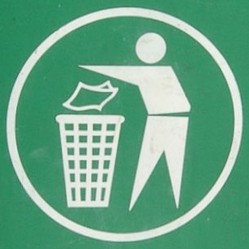

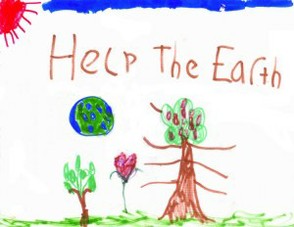
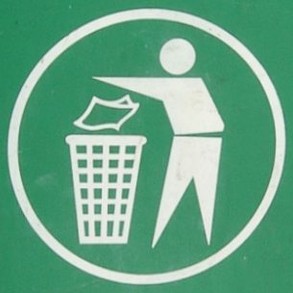
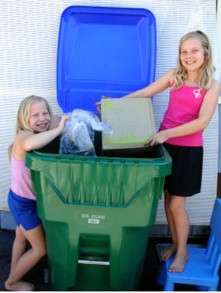



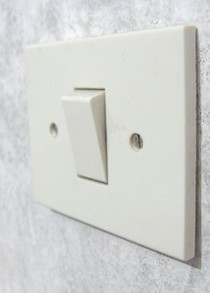



 Comforting Poems and Quotes for Funerals, Eulogies and Memorial Serviceson 07/04/2011
Comforting Poems and Quotes for Funerals, Eulogies and Memorial Serviceson 07/04/2011
 Review of The Best Overall Diet Planson 06/08/2011
Review of The Best Overall Diet Planson 06/08/2011
 The Best Diet Plans from U.S. News Expertson 06/07/2011
The Best Diet Plans from U.S. News Expertson 06/07/2011
 Memorial Labyrinths and Prayer Labyrinthson 06/07/2011
Memorial Labyrinths and Prayer Labyrinthson 06/07/2011

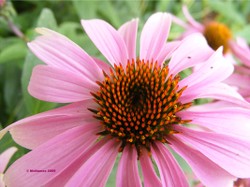
Comment on Raising Eco Friendly Children
nice article, i agree, we must teach our children to love their environment
Great tips for raising Eco Friendly Children. Our local Keep America Beautiful program does a great job with this, too.